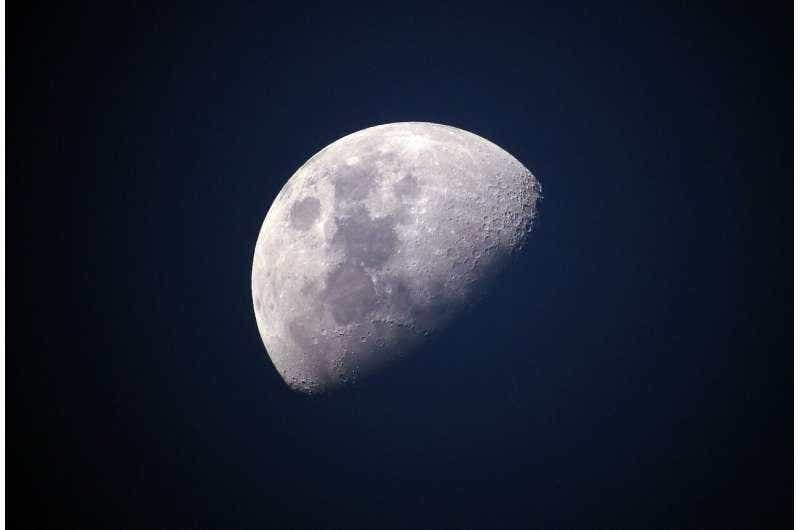Scientists uncover what lies beneath the far side of the moon
A new technique for processing lunar radar data has allowed scientists to see what lies beneath the surface of the moon in detail.

[August 5, 2021: University of Aberdeen]
A new technique for processing lunar radar data has allowed scientists to see what lies beneath the surface of the moon in the clearest ever detail.
In a study led by the University of Aberdeen, a team of researchers discovered multiple layers of soil that lie directly beneath an area on the far side of the moon's surface, overturning an existing theory of a single deep layer in the same area.
The area studied was the landing site of the Chang'E-4 spacecraft mission—the first to the far side of the moon.
Analysis of radar data captured by the mission's rover, Yutu-2, had suggested the existence of a single soil layer in the moon's regolith (subsurface). However, the data did not indicate the existence of different layers of soil, which were transparent to electromagnetic waves due to the smooth boundaries between them.
By developing a new method of processing the data captured by Yutu-2, which uses the shape of radar signatures of buried rocks and boulders to infer the properties of surrounding lunar soil and detect previously unseen layers with smooth boundaries, scientists were able to detect four distinct layers of soil, stacked to a depth of 12 meters.
Dr. Iraklis Giannakis, from the University of Aberdeen's School of Geosciences, led the research in collaboration with counterparts from the University of Edinburgh, Northumbria University and Chinese University of Geosciences Wuhan. The results have been published in the journal Geophysical Research Letters.
Dr. Giannakis says that "the novel radar processing method that we have developed has allowed us to study the radar data from the Chang'E-4 landing site in much greater detail."
"By doing so, we have discovered that, rather than a homogenous 12 meter deep regolith whose material source was thought to be a nearby crater called Finsen, there is a more complicated structure where the first 12 meters consist of four distinct layers that were previously unseen using conventional radar processing."
Dr. Giannakis said that the development of a new method of interpreting lunar radar data is a significant development in planetary exploration.
He explains that "we are experiencing the new golden era of space exploration with numerous successful planetary missions and many more planned for the future."
"Tianwen-1 and Perseverance are two successful Mars missions that include radar in their scientific payloads, as well as the Chang'E-3, E-4, E-5 and the planned Chang'E-7 mission."
"The methodology we have developed can be used to infer the properties of the subsurface using radar and detect previously unseen layered structures within the first 10 to 20 meters of planetary soils."
"This will be of great importance in terms of increasing our understanding of planetary soils, as we can now see what lies beneath the surface in more detail than ever before."
Like these kind of feel good stories? Get the Brighter Side of News' newsletter.
Tags: #New_Discoveries, #Space, #Moon, #Astronomy, #The_Brighter_Side_of_News
Joshua Shavit
Science & Technology Writer | AI and Robotics Reporter
Joshua Shavit is a Los Angeles-based science and technology writer with a passion for exploring the breakthroughs shaping the future. As a contributor to The Brighter Side of News, he focuses on positive and transformative advancements in AI, technology, physics, engineering, robotics and space science. Joshua is currently working towards a Bachelor of Science in Business Administration at the University of California, Berkeley. He combines his academic background with a talent for storytelling, making complex scientific discoveries engaging and accessible. His work highlights the innovators behind the ideas, bringing readers closer to the people driving progress.



